Spending time outdoors is one of life’s great pleasures. Lounging on your patio or deck with friends and family often centers around outdoor furniture like patio sets, lounge chairs, hammocks and patio tables. Keeping your outdoor furniture clean allows you to get the most enjoyment out of these spaces. Dirty, weather-worn furniture not only looks bad, but can also be unhealthy.
Luckily, with the right techniques and cleaning solutions, you can easily wash outdoor furniture and keep it looking like new. This complete guide covers everything you need to know to clean all types of outdoor furniture and maintain it for years to come.
Why It’s Important to Clean Outdoor Furniture
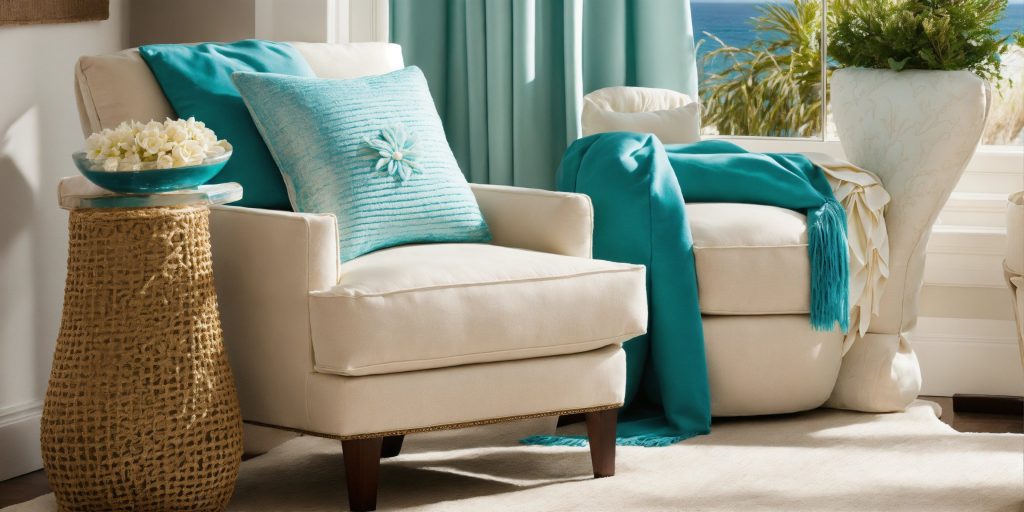
Clean outdoor furniture provides a more enjoyable experience when lounging and entertaining outdoors. Here are some of the main benefits of keeping patio and deck furniture clean:
Extends Furniture Life
Dirt, grime, mold and mildew can wear down outdoor furniture prematurely. A good cleaning removes debris and helps protect the furniture from elements that break it down. Taking good care of outdoor furniture helps it last longer.
Prevents Stains
Food, drink, dirt, pollen and environmental stains make furniture look dirty and dated. Regular cleanings prevent stains from setting in and save you from having to look at unpleasant blemishes while relaxing.
Eliminates Odors
Bacteria, mold, mildew and residue from food and drink can cause stubborn odors. A thorough cleaning gets rid of smells so you don’t have to deal with funky furniture every time you step outside.
Improves Comfort
It’s not very relaxing to lounge on dirty furniture. You also wouldn’t want to accidentally touch sticky spots left from drinks and food. Clean outdoor furniture is more comfortable and enjoyable to hang out on.
Enhances Ambiance
A fresh, clean set of patio furniture invites you to sit back and soak up the atmosphere. Dirty furniture repels and brings down the mood instead. Regular cleanings let you create an enticing outdoor space.
How Often To Clean Outdoor Furniture
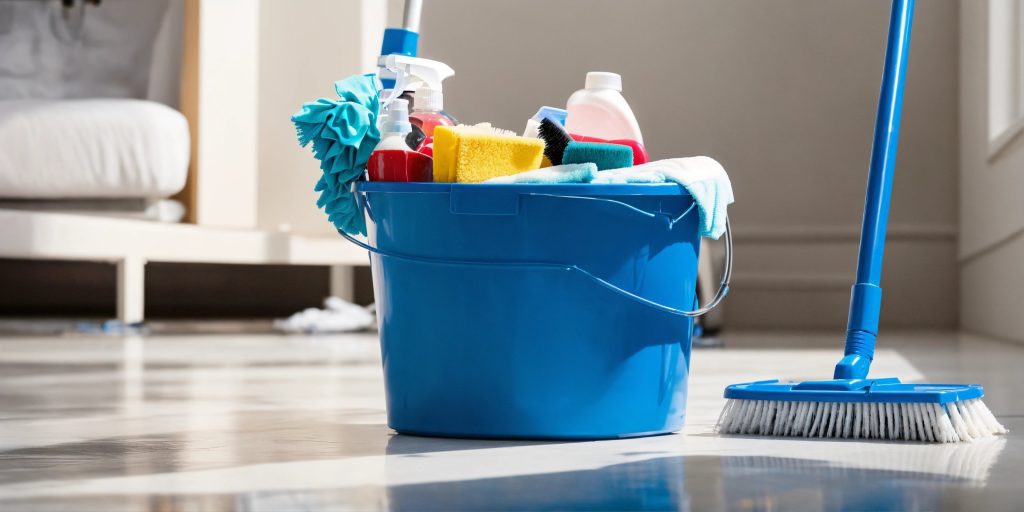
Most outdoor furniture needs a deep cleaning at least two times per year—in the early spring to prepare for the season and in the fall to put it away clean over the winter. During the outdoor living season, monthly maintenance cleanings help keep everything fresh. More frequent light cleanings may be necessary for furniture around pools and fireplaces since these tend to get more use.
Any time the furniture looks dirty, has developed stubborn stains or becomes infested with bugs or spiderwebs is also a sign it’s time for a cleaning. Developing an outdoor furniture care plan helps stay on top of when cleanings are needed.
Getting Started with Cleaning Outdoor Furniture
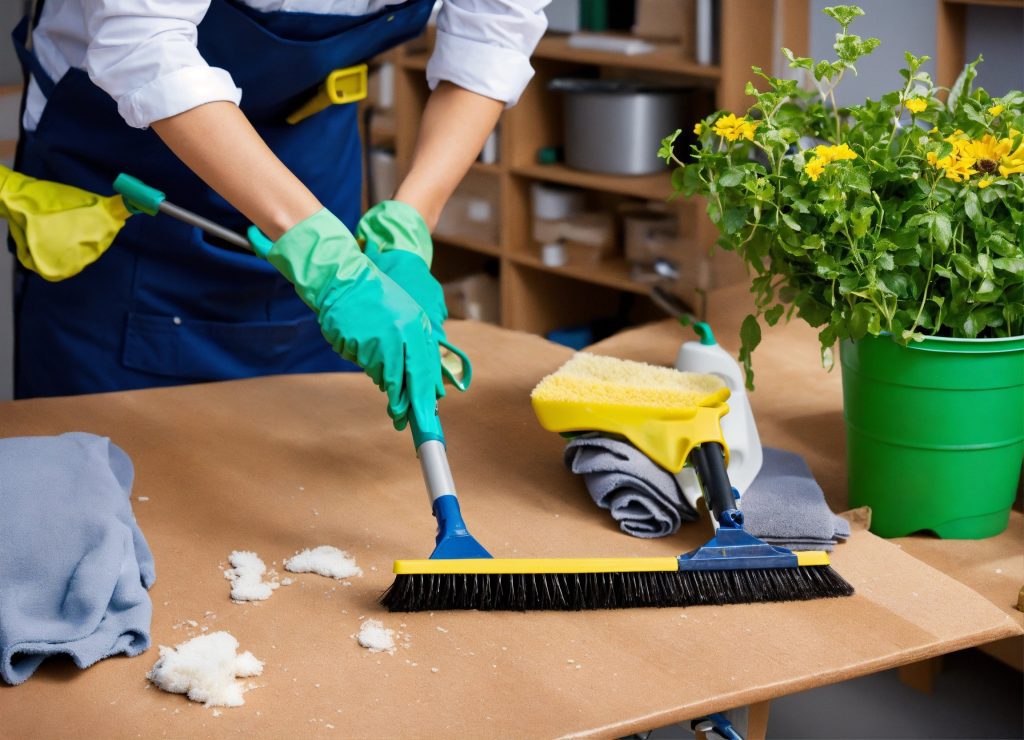
Before you break out the cleaning supplies, take some time to prepare properly so your efforts are efficient and effective:
Inspect Carefully
Before cleaning, thoroughly inspect each piece of furniture for problem areas that need special attention. Check for cracks, splinters, loose parts, areas of wear, large stains or damage. Make notes so you can tackle specific issues efficiently.
Remove Cushions & Fabrics
Most outdoor cushions and fabrics can be removed for easier cleaning and to prevent water or cleaner damage. Check each cushion and fabric item’s care label for instructions and remove according to recommendations.
Evaluate Scale of Cleaning Needed
Assess how much cleaning, maintenance or restoration your outdoor furniture needs. Surface cleaning is sufficient if mildew, dirt or other issues are minor. Deep, intensive cleaning is required for furniture with more problematic stains, grime buildup, splinters etc.
Gather Necessary Supplies
Assemble all the cleaning solutions, tools, safety gear and other items you’ll need so everything’s handy during the cleaning process. Having the right supplies makes cleaning more efficient.
Careful inspection, planning and setup prevents unexpected issues and allows you to get furniture as clean as possible. You’re now ready to start the satisfying process of washing away dirt and debris!
Cleaning Wood Furniture vs. Metal, Wicker & Plastics

Outdoor furniture comes in varied materials like wood, metals, plastics, wicker and combinations thereof. The cleaning method and solutions needed differ quite a bit depending on what a piece is constructed of.
Here’s an overview of how to handle different materials:
Wood Furniture
Teak, redwood, cedar, acacia and eucalyptus woods are common for outdoor furniture because they resist moisture, swelling, cracking and insects. Despite their hardiness, they still need regular cleaning and maintenance to prevent damage.
How to Clean: Use a soft cloth or brush dampened in warm, soapy water. For tackling mold, mildew or stains, make a solution of 2 cups white vinegar, 1/4 cup baking soda, 2 tbsp. of vegetable oil and 1 gallon warm water. Dip a soft cloth into the solution and gently scrub the wood. Rinse thoroughly with clean water when done.
Allow the wood to dry fully in the sun to prevent water damage and new mildew growth. Maintaining teak furniture’s golden color may require more maintenance like yearly sanding and oiling.
Wicker Furniture
Wicker refers to furniture woven from plant materials like rattan, reed or straw. It’s intricate, interlaced patterns lend visual elegance but can trap dirt easily.
How to Clean: Use a vacuum attachment to suck up loose debris between wicker crevices then use detail brushes to sweep away stuck-on dirt. Create a solution of 2 gallons of warm water, 1/2 cup of white vinegar, 1/4 cup bleach-free dish or laundry detergent and 2 tbsp. of vegetable oil all mixed together then scrub every crevice with it using a soft brush. Rinse thoroughly with clean water and allow to dry completely.
Applying protective sealant helps repel dirt and moisture. Touch up flaking sealant as part of each deep cleaning.
Metal Furniture
Cast iron, wrought iron, steel and aluminum are commonly used metals for outdoor tables, chairs, benches and other structures. Each requires slightly different care.
How to Clean: Remove any loose debris then scrub using a solution of hot water and mild detergent. For tougher grime like rust spots on iron or oxidation on aluminum try gentle abrasives like baking soda, silver polish, steel wool pads or orbital polishers removing rust converters first if needed.
Rinse thoroughly after scrubbing. Make sure not to damage protective finishes. Prevent new rust by drying metal completely and applying paste wax, car wax or mineral oils regularly.
Plastic Furniture
Plastic outdoor furniture is affordable and comes in many styles. Made from polypropylene, polyethylene or PVC molded plastic, water can easily damage it.
How to Clean: Use a sponge or soft cloth with warm, soapy water avoiding harsh detergents. For tougher stains, spray on vinegar and scrub gently with a magic eraser type cleaning pad.
Rinse thoroughly and wipe excess moisture with a microfiber cloth to prevent water damage. Don’t use protectants not made specifically for plastics. Garage or car wax works once fully dry.
Best Cleaners for Outdoor Furniture Surfaces
Having the right cleaners makes washing outdoor furniture easier and prevents damage. Stock up on these multi-purpose options:
- Dish detergent or soap – cuts grease and food films
- Baking soda – deodorizes and cleans without scratching
- White vinegar – disinfects and breaks down grime
- Oxygen bleach cleaner – whitens and removes stains without chlorine
- Boiled linseed oil – nourishes, protects and preserves wood
- Paste wax – repels moisture and prevents oxidation
- Mineral oil – penetrates to remove rust and shine metal
Start with the gentlest solutions first then move to stronger ones only if needed. Doing a spot test first ensures cleaners won’t damage or discolor your specific outdoor furniture materials.
Step-by-Step Guide for Cleaning Outdoor Furniture
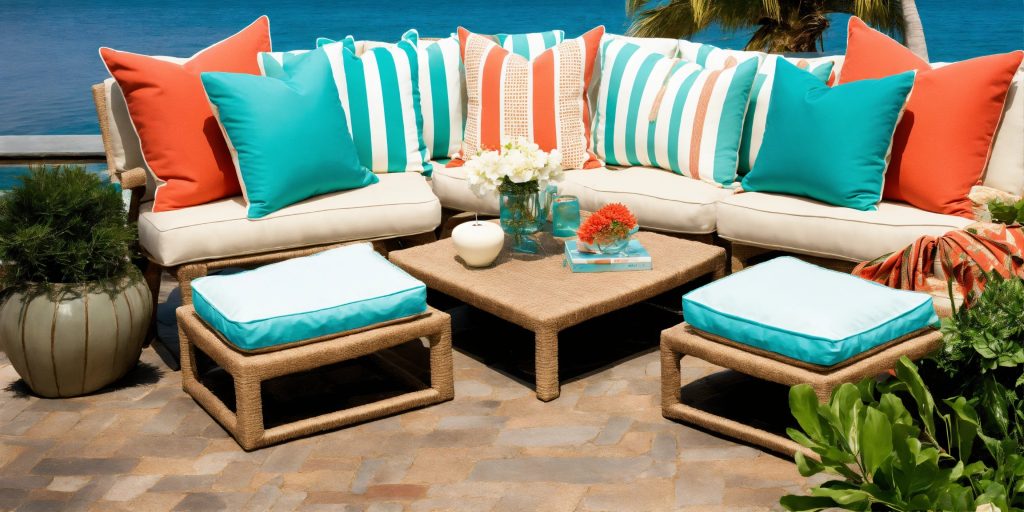
Once you assess furniture needs and gather supplies, the hands-on cleaning begins. Follow these key steps for cleaning most types of outdoor furniture:
- Remove Loose Debris: First, use a dry bristle brush, vacuum, compressed air or towel to wipe away any loose dirt, leaves, bird droppings etc. Removing debris prevents scratching chairs and tables when you scrub later.
- Apply Cleaner: Spray your prepared cleaning solution onto furniture surfaces using a spray bottle. Check for immediate paint, finish or material damage reactions. Let the cleaner sit for 5-10 minutes so it penetrates and breaks up stubborn films and deposits.
- Scrub All Surfaces: Use appropriate soft brushes, sponges or microfiber cloths to gently scrub every furniture surface removing all dirt and stains in crevices, corners and engraving. Take extra time on stained or damaged areas.
- Rinse Thoroughly: Rinse all soap residue, cleaner solution and debris runoff using a garden hose with adjustable nozzle attachment for better control. A power washer on the gentlest setting can tackle heavier muck but requires caution about propelling debris into eyes.
- Let Furniture Dry Fully: Use towels to soak up pooled moisture then allow furniture to air dry completely before applying protective finishes, wax or replacing cushions. Trapped moisture can damage furniture.
- Apply Protective Finishes: Once fully dry, apply appropriate wood oils, sealants or polishes. Evenly coat all surfaces following product directions. Buff off any excess once dry for a refreshed, protective shine.
Repeat cleaning steps as needed for badly soiled or moldy furniture. Disinfecting sprays help kill germs after initial soap scrubbing. Bleach solutions require extra safety measures plus thorough rinsing to prevent damage.
Cleaning Outdoor Furniture Fabrics & Cushions

Outdoor pillows, cushions and fabric covers shouldn’t be forgotten when cleaning patio furniture. Here’s how to handle them:
Check Labels
Fabric cleaning method depends on the materials used – acrylic, polyester, olefin, vinyl or cotton. Check labels then follow specific recommendations which typically allow machine washing gentle cycles with mild detergent.
Surface Clean Gently
For surface cleaning without full removal, vacuum then use a soft brush and mild soap solution. Let solution sit briefly before rinsing residue. Air dry fully.
Machine or Hand Wash
If machine washing, first zip up cushion covers and close Velcro. Use gentle cycles and cold water with powder detergent. Air dry completely.
For hand washing, fill tub with cool water and delicate soap then immerse cushion or fabric piece fully and gently squeeze the sudsy water through before rinsing soap fully away.
Disinfect Regularly
Once dry, spray fabric down with disinfectant solution. This prevents mold and bacterial growth especially important for cushions around pools.
Take special care when cleaning outdoor fabrics and cushions since they can easily develop mold if left damp. Always follow individual furniture care instructions too.
Key Areas to Target As You Clean

As you scrub down outdoor furniture, spend extra time focusing cleaning efforts on these spots known to attract and trap gunk:
Underneath Surfaces
Don’t forget the undersides and bottom surfaces of furniture legs, supports and slats since debris and stains often collect here out of sight. Angle furniture or lift safely to access. Use detail brushes and pointed nozzle attachments to reach tight spots if needed.
Crevices and Engraved Areas
Intricate patterns, cracks and carvings on chairs, benches, tables, etc can easily catch and hide dirt. You’ll need to concentrate efforts here and likely do more frequent touch-ups.
Corner Junctions and Joints
Check where furniture legs, arms and frame pieces come together especially wood joints which expand and contract against each other trapping debris over time. Use small tools to scrape out if needed.
Hardware, Wheels and Mechanisms
Examine moving parts like hinges on folding furniture, wheels or casters, locks, latches and other hardware. Clean built-up grime then lubricate, tighten screws or make repairs so the furniture functions properly again.
Pay special attention to these oft-neglected areas for the most thorough, beautiful clean possible. Doing so keeps furniture fully usable and expands it’s lifespan.
Removing Specific Types of Outdoor Furniture Stains
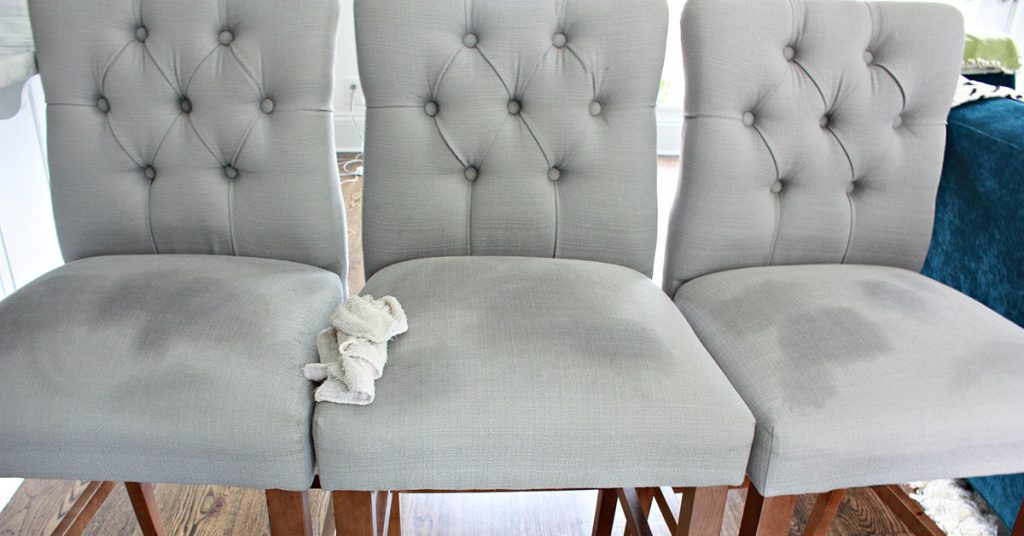
Even with regular overall cleaning, stubborn organic and environmental stains happen. Tailor your removal methods to tackle these common outdoor culprits:
Mold and Mildew
Mix equal parts white vinegar and water in a spray bottle. Lightly spritz the mildew stains then use a scrub brush before wiping away the moisture. Helpful detergents for extra stain fighting power are oxygen bleach and Borax powder. Wear gloves and eye protection when using stronger mold killers containing chlorine which requires thoroughly rinsing residue away.
Bird Droppings
Fresh droppings can be scraped away using a plastic spatula or paint stir stick before a soapy scrub. Dried acidic poop stains take a baking soda paste left 10-20 minutes before scrubbing and rinsing. Lightly sand affected wood afterwards.
Tree Sap
Dab sticky sap with rubbing alcohol to harden before scraping residue away. Avoid pulling which can damage furniture. Then use soapy water to remove any last bits left behind and erase alcohol marks.
Ink, Paint & Grease
Carefully use isopropyl rubbing alcohol on stains from pen, marker, paint or oils. Check for adverse furniture reactions first though. For tougher paint or grease, try nail polish remover with acetone again checking carefully on an inconspicuous spot before applying widely.
Fruit and Berries
Mix equal parts white vinegar and warm water to wipe most fruit stains away before soapy scrubbing. For stubborn berry stains, try some lemon juice followed by peroxide if vinegar fails. Just don’t let acidic solutions sit long on metal furniture.
Wine and Coffee
Work up some suds with a gentle dish soap then liberally apply the lather to stained areas. Let sit 2-3 minutes before scrubbing and rinsing. Repeat as necessary for bad stains aiming to lift both dirt and color deposits.
Outdoor furniture takes a beating and stains are inevitable. By tailoring your cleaning method and solution to the type of stain, you can make your patio set look refreshed and new again.
Cleaning Specific Types of Outdoor Furniture
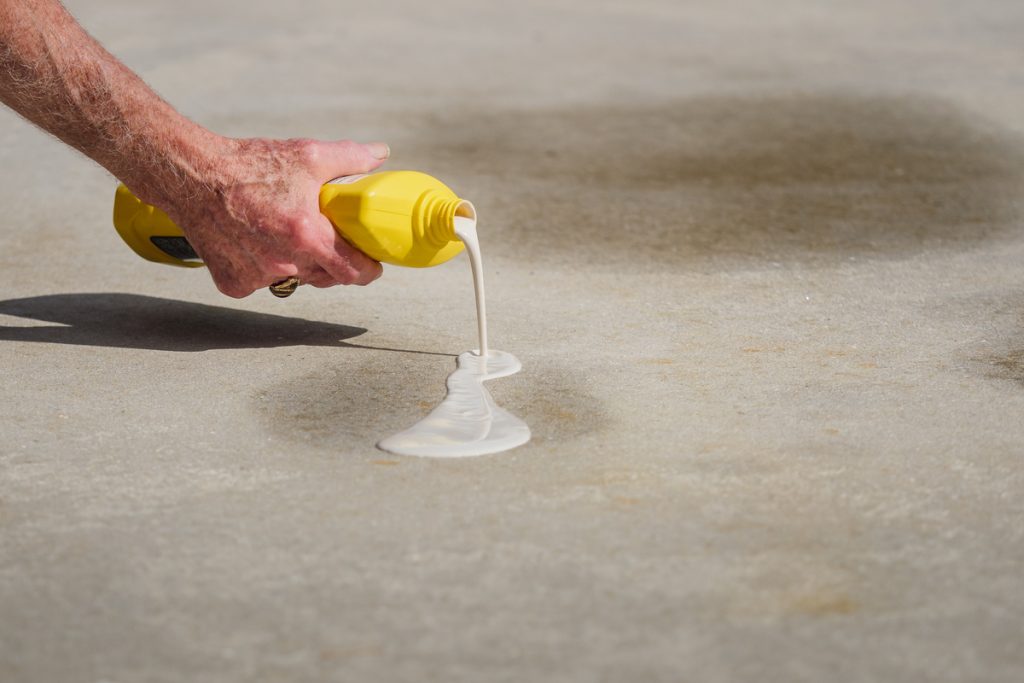
Beyond understanding furniture materials when cleaning, technique varies based on the category of furniture being washed too. Follow specialty recommendations for these popular kinds:
Patio Sets
Dining sets have flat table tops but intricate details on table legs, chairs and umbrella stands. Get into crevices with detail brushes and lift furniture to clean all sides. Prevent water pooling on tables when rinsing since this can cause damage, lead to new mildew growth and prohibit even drying.
Chaise Lounges
Cleaning adjustable reclining chairs takes patience to address every surface and angle without missing spots. Use pointed bottle nozzles for tight spaces between cushions and frames. Allow longer drying times given their absorbent cushioning and moving hinge points prone to moisture retention.
Hammocks
Remove hammock from stands and fully spread out during cleaning for best access. Soak tough stain spots in small buckets of cleaning solution before doing an overall gentle surface scrub. Rinse small sections at a time until fully covered. Rehang only when completely dry to prevent mold growth along ropes or fabrics.
Conversation Sets
Sectional sofas, love seats, ottomans and side tables tend to stain easily from constant contact and spills. Cover large surface areas working in manageable sections for maximum coverage and stain fighting power. Inspect and aim cleaning efforts under furniture pieces too against ground soil and grass moisture.
Think through outdoor furniture pieces individually and tackle them systematically for a comprehensive, even clean. Adjust technique to maximize results based on construction style and typical usage.
Protecting and Storing Clean Furniture
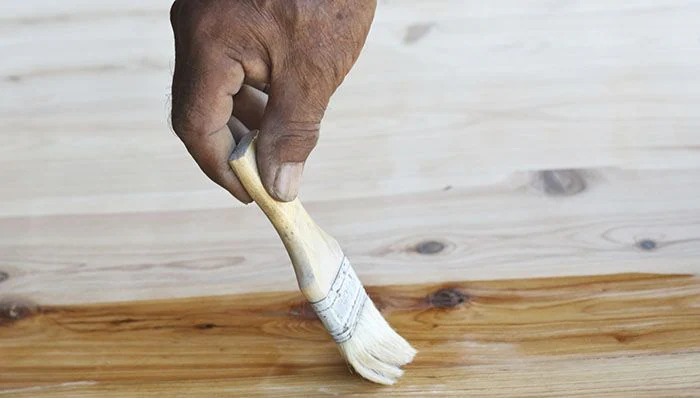
After putting all that effort into washing and restoring outdoor furniture, you’ll want to keep it maintained between deeper cleanings. Here are some protection and storage tips:
Use Furniture Covers
Invest in weather and moisture resistant covers for furniture like patio sets, hammocks, daybeds, etc when not in use. This prevents dirty and stained buildup between washes.
Apply Protective Coatings
Use recommended products like teak oil, paste wax or plant-based sealants to protect wood pieces from moisture, mold and UV sunlight damage. Re-apply as directed on labels to keep the protective barrier strong for as long as possible.
Correct Off-Season Storage
Before winter, clean furniture thoroughly before drying fully and applying protective coatings. Stack chaise cushions upright allowing air circulation to prevent mildew. Store furniture under waterproof covers secure from wind and snow if keeping outside. For wood, wicker and cushions, covered indoor storage works best.
Taking some basic precautions maximizes the cleaning efforts you put in. Establishing an outdoor furniture care routine ensures everything stays looking pristine and functional for seasons to come!
Achieve Patio Perfection with Proper Furniture Care
Your dream backyard oasis relies on clean, inviting patio furniture you actually want to spend time lounging, dining and relaxing on. Taking advantage of nice weather means being outdoors more and exposing furniture to even more dirt, food spills, rain, pollen and other grime.
Without proper care, outdoor furniture surfaces start to show accumulated stains and damage while frames weaken and fabric tears. But keeping up with regular washing and maintenance lets you prevent eyesores before they become problematic. And tackling issues promptly allows you to restore furniture without too much elbow grease.
FAQs
You can use a pressure washer on most metal and heavier wooden furniture but take precautions. The harsh spray can damage more delicate pieces. Only use wider angle, low pressure tips and keep the nozzle farther back, spraying gently. Rinse wicker lightly avoiding tearing softer vines.
Check if your cushion covers are machine washable then use gentle cycles with cool water and mild powder detergent if so. For hand washing, fill a tub with cool water and delicate soap, immerse cushions and gently squeeze through soapy water before rinsing thoroughly. Hang to drip dry or tumble dry low.
Mix equal parts white vinegar and water in a spray bottle. Lightly mist mildew patches then use a soft scrub brush before wiping residue and moisture away. Let the furniture dry completely to prevent new mold growth. Oxygen bleach cleaners and Borax also help kill mold and mildew.
Start by vacuuming debris from the fabric with an appropriate attachment then mix warm water and delicate laundry detergent in a bucket. Use a soft bristle scrub brush dipped in the solution to gently scrub stains before thoroughly rinsing away all detergent with plain water. Air or tumble dry.
Before storage, clean furniture fully with the appropriate method for the material (soft soapy water and cloths for plastic, vinegar solutions for wood, etc). Allow all furniture to dry completely. Apply protective treatments like polish, wax or wood oil. Cover with waterproof, breathable furniture covers.
Moisture ruins outdoor cushions fastest. That’s why thorough drying before covering or storing is so important. Dirt, food and other spills that aren’t promptly cleaned off outdoor fabric also leads to staining, smells and deterioration over time from bacteria and mold growth.




